This is the continuous reform of employment and education in China , The current undergraduate education has been unable to meet the fierce market competition , Many college students will be admitted to civil servants during their senior year . Take the postgraduate entrance examination or obtain the corresponding teacher qualification certificate to increase their employment opportunities after graduation .
Our national civil servant refers to : Perform public duties according to law 、 Included in the national administrative establishment 、 Staff members whose wages and benefits are borne by the state finance . They are mainly paid by the state 、 Retirement, welfare, etc . Can give more people a job opportunity , The state publicly recruits civil servants every year . College students can obtain civil service positions through public recruitment examinations .
Civil service examination information management system is an essential part of the civil service examination . In the whole process of the civil service examination , Civil service examination information management plays the most important role . To meet today's increasingly complex management needs , Civil service examination information management procedures are also constantly improving
Civil service examination information management system , You can view the home page on the home page of the system , Learning Area , The examination paper , System of announcement , Personal center , Background management, etc
After the administrator logs in to the system , Can be on the home page , Personal center , User management , Learn classification management , Learning area management , Question management , Test paper management , System management , Test management and other functions for corresponding operation management 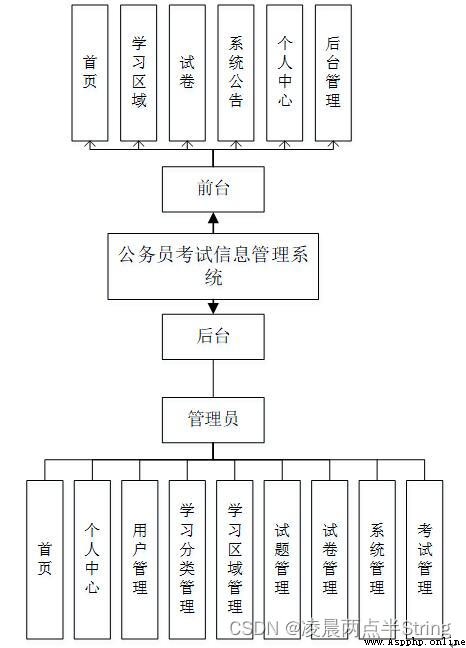
Item number : python226django Civil service examination information management system
development language :Python
python frame :django
Software version :python3.7/python3.8
database :mysql 5.7 Or later
Database tools :Navicat11
Development software :PyCharm/vs code
The front frame :vue.js
Civil service examination information management system , You can view the home page on the home page of the system , Learning Area , The examination paper , System of announcement , Personal center , Background management, etc , And carry out detailed operation ;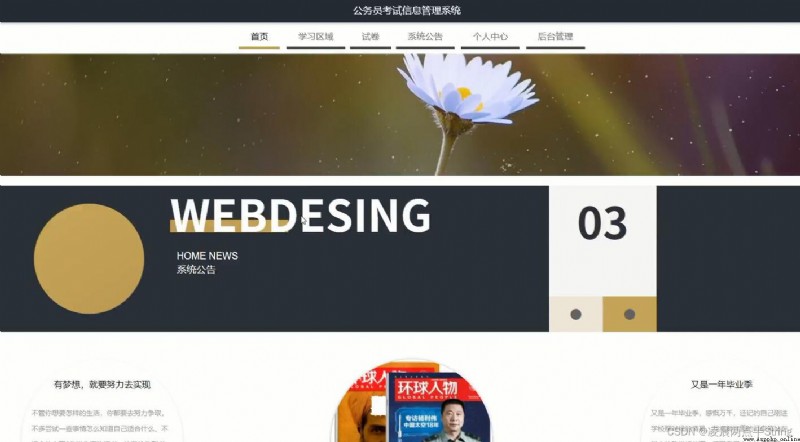
The examination paper , You can view the name of the test paper on the test paper page , The length of the test paper , Create time and other contents and conduct examination operations 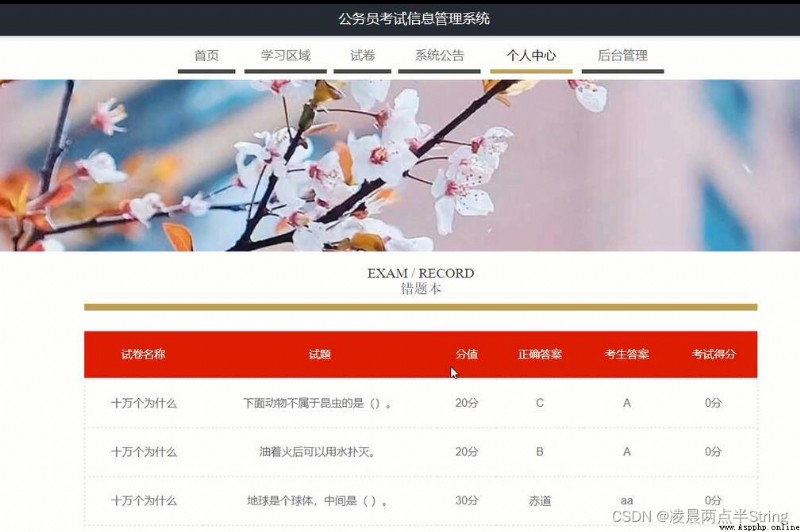

User management , On the user management page, you can index , The user account , User name , Gender , Age , Head portrait , Details of user's mobile phone and other contents , Operations such as modification and deletion 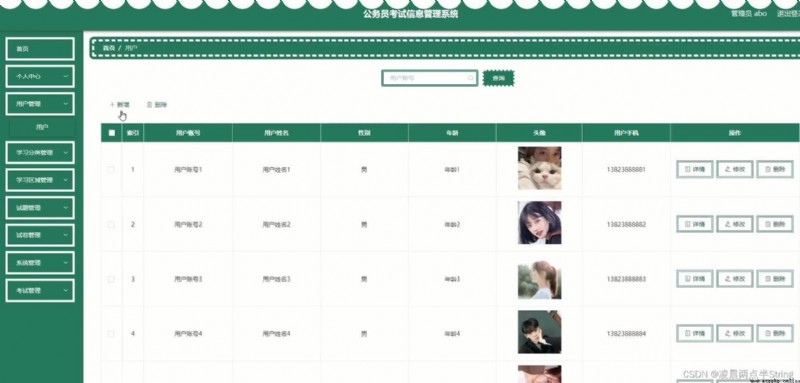
Learning area management , In the learning area management page, you can index , Title Title , Cover picture , Learning video , Learning classification , Release time and other contents , Modify and delete operations 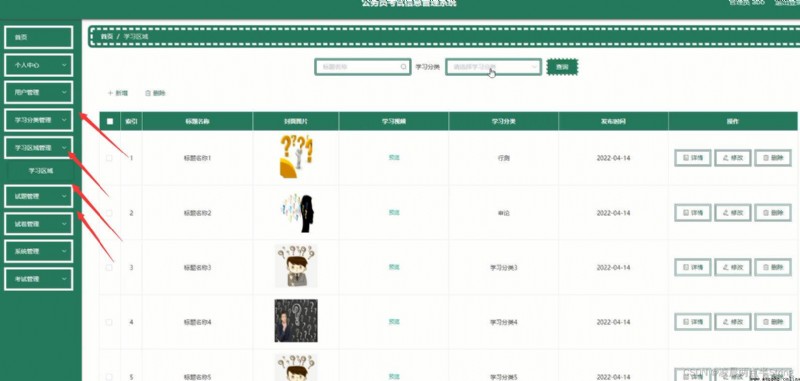
Catalog III
1 The introduction 4
1.1 Development background 4
1.2 Development significance 4
1.3 Research status of the subject 4
1.4 Project research content 5
2 Introduction to development technology 6
2.1B/S framework 6
2.2Python brief introduction 6
2.3 Django frame 6
2.4 MySql database 6
2.5MySQL Environment configuration 8
3 Systems analysis 9
3.1 Feasibility analysis 9
3.1.1 Technical feasibility 9
3.1.2 Economic feasibility 9
3.1.3 Operational feasibility 10
3.1.4 Operational feasibility 10
3.2 System performance requirements analysis 10
3.3 System function analysis 10
3.4 Analysis of system flow 11
3.4.1 User management process 12
3.4.2 Personal center management process 12
3.4.3 The login process 13
4 The system design 14
4.1 Software function module design 14
4.2 Database design and implementation 14
4.2.1 Conceptual model design 15
4.2.2 Database logical structure design 15
5 Detailed design of the system 21
5.1 System function module 21
5.2 Administrator function module 23
6 The system test 28
6.1 Test purpose 28
6.2 Test steps 28
6.3 Test conclusion 28
7 system maintenance 29
8 Conclusion 30
reference 31
thank 31